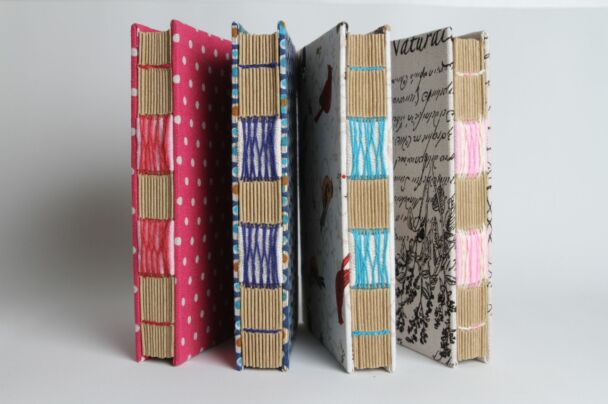Description
Incorporating art activities into teaching promotes student engagement, creativity, and lateral thinking, facilitating a more effective learning process and ensuring long-term knowledge retention.
Encouraging students to personalize their study materials, such as creating notebooks and other learning materials, fosters a sense of ownership and enhances motivation and focus.
This course focuses on bookbinding techniques and the creation of personalized boxes, containers, and folders, introducing participants to a variety of artistic methods for self-expression and engagement in learning.
Traditional bookbinding techniques, including Japanese binding and case binding, as well as experimental methods, will be explored based on participants’ interests.
Each technique will be associated with a unique creative activity, allowing for personalized learning experiences. Participants will engage in self-reflection through color and drawing techniques, discovering how artistic activities can help them understand individual expression and preferences.
By developing empathy through art, educators can better understand and engage their students in the learning process.
The course emphasizes both personal learning and teaching applications, making the techniques accessible to everyone, including kindergarten children.
What is included
Learning outcomes
The course will help the participants to:
- Learn different techniques of bookbinding and paper object creation;
- Make use of art theory and practice in a productive way;
- Understand and consider a new tool for teaching creatively;
- Improve creative attitude and stimulate lateral thinking.
Tentative schedule
Day 1 – Course introduction
- Introduction to the course, the school, and the external week activities;
- Icebreaker activities;
- Historical hints on places to visit.
Background theory and first activity
- Foundation in bookbinding, artist’s book and paper as a material;
- Creation of a folder.
Day 2 – Hand on works: Japanese binding and Singer stitch
- The Japanese technique for children;
- The traditional Japanese technique;
- Variations of the Japanese technique;
- The Singer stitch technique.
Day 3 – Hands-on work: covers creation and other techniques
- The “cover” concept;
- Creating covers;
- The Coptic technique and Buttonhole technique.
Day 4 – Hands-on work: traditional and experimental case binding
- The traditional case binding technique;
- Experimental techniques.
Day 5 – The artist’s book concept
- Sorting and selection of collected materials;
- Creation of new materials;
- Leporello’s book technique;
Final presentation
- Presentation of one’s work to the group and discussion
- How to bring your new competencies in your class: activities ideas.
Day 6 – Course closure and cultural activities
- Course evaluation: round-up of acquired competencies, feedback, and discussion.
- Awarding of the course Certificate of Attendance.
- Excursion and other external cultural activities.

